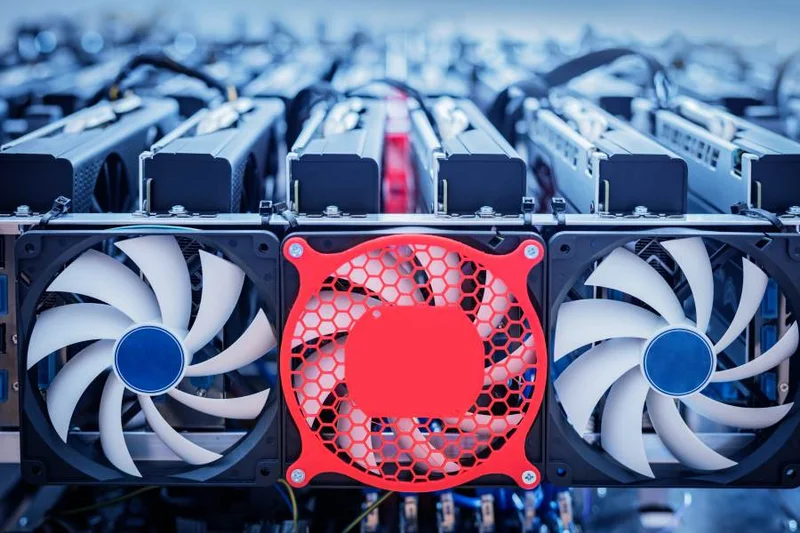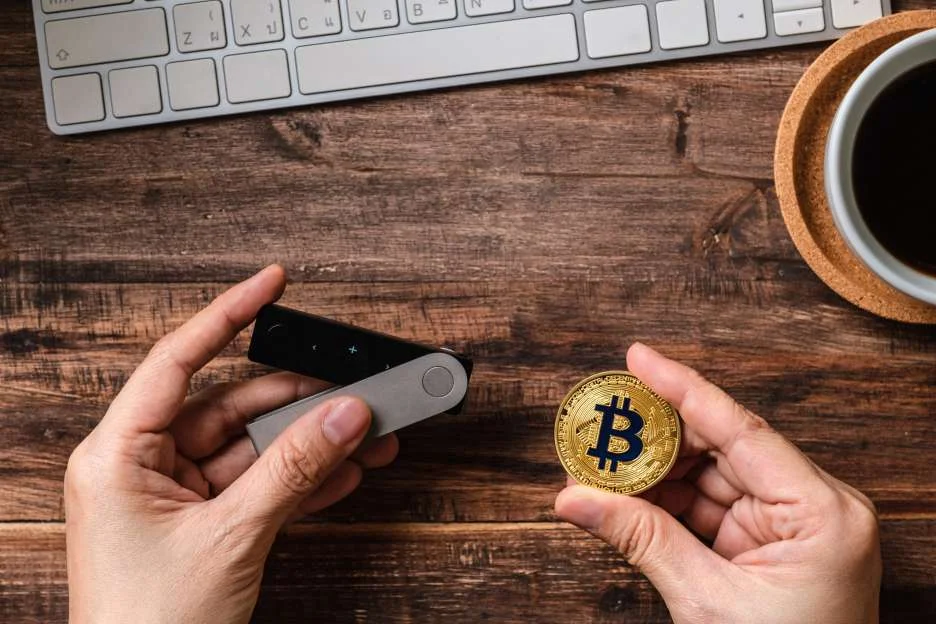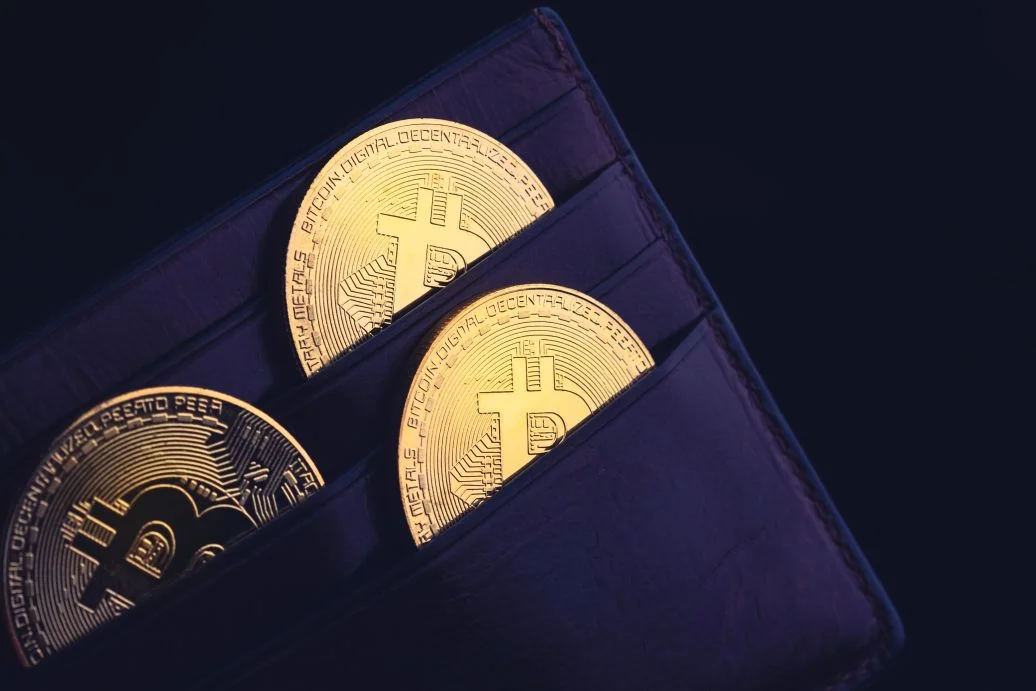
Email:
Follow us:

In the ever-evolving landscape of cryptocurrencies a groundbreaking concept recently gaining momentum is "Liquid Farming." As blockchain technology continues to revolutionize finance and redefine how we interact with digital assets, liquid farming emerges as a powerful technique for crypto enthusiasts looking to maximize their investments.
Liquid farming represents a unique opportunity to earn passive income in crypto by participating in liquidity provision for decentralized exchanges (DEXs) and automated market makers (AMMs). But what exactly is liquid farming, and how can you embark on this exciting journey? This comprehensive step-by-step guide is here to demystify the process and help you confidently navigate the world of liquid farming.
Whether you're a seasoned crypto trader or a novice looking to dip your toes into decentralized finance (DeFi), this guide will walk you through the essentials, from understanding the fundamentals of liquid farming to setting up your liquidity pool and managing your crypto assets more efficiently. Get ready to unlock the potential of liquid farming and harness the power of DeFi to secure your financial future.
Liquid farming is all about liquidity provision, a crucial component of DeFi platforms that allows users to provide their assets to decentralized exchanges and earn rewards in return. These rewards typically come in the form of transaction fees and governance tokens. The significance of liquid farming lies in its potential for substantial returns compared to traditional savings accounts or even staking.
Participating in liquid farming makes you an integral part of the DeFi infrastructure, contributing to the liquidity pools that power decentralized exchanges. This not only aids in the seamless functioning of these platforms but also allows you to earn a portion of the fees generated from trading activities.
Understanding why liquid farming matters is the first step in harnessing its potential. As we delve deeper into this guide, you'll discover the intricate details of this exciting crypto venture and how it can positively impact your financial portfolio.
Selecting the appropriate liquidity farming pool is critical when embarking on your liquid farming journey. Each DeFi platform offers a variety of pools, each with unique characteristics, risks, and potential rewards.
The first consideration in choosing a liquidity pool is the cryptocurrency pair you want to provide liquidity for. Pools typically consist of two assets, and you should select pairs that align with your investment goals and risk tolerance. Additionally, assessing the pool's historical trading volumes and liquidity depth can give you insights into its overall performance.
Another crucial factor is the associated rewards. Different pools may offer varying returns, often in governance tokens and trading fees. Research and compare the potential rewards across different pools to make an informed decision.
Consider the reputation and security of the DeFi platform hosting the liquidity pool. Platforms with a strong security and reliability track record should be prioritized to mitigate risks.

Before diving into liquid farming, establishing a secure wallet and implementing robust security measures is paramount. The cryptocurrency world can be a hotbed for cyber threats, making it essential to safeguard your assets.
Begin by choosing a reputable cryptocurrency wallet that supports the assets you intend to use for liquidity provision. Hardware and software wallets each have pros and cons, so weigh your options carefully. Ensure your wallet offers features like multi-factor authentication (MFA) and strong encryption to enhance security.
Once your wallet is set up, employ industry best practices to safeguard it. Enable MFA wherever possible and create complex, unique passwords. Keep backups of your wallet's private keys in secure, offline locations to prevent loss in case of device failure or theft.
Additionally, stay vigilant against phishing attempts and fraudulent schemes. Never share your private keys or wallet recovery phrases; only engage with trusted sources and platforms.
By establishing a secure wallet and following stringent security measures, you significantly reduce the risks associated with liquid farming. This foundational step ensures the protection of your assets as you participate in DeFi activities.
With your wallet securely set up, the next step in your liquid farming journey is to add funds to the pool portion. This process involves acquiring the cryptocurrencies you plan to provide as liquidity in the chosen pool.
Begin by acquiring the necessary assets through a reputable cryptocurrency exchange. Ensure you select a trustworthy exchange with adequate security measures to protect your funds. Use well-established platforms to minimize the risk of fraud or hacking.
Once you've acquired the desired assets, transfer them to your wallet. Ensure you follow the best cryptocurrency transfer practices, including double-checking addresses and transaction fees. It's also advisable to start with a small test transfer to confirm the process's accuracy before moving larger amounts.
Remember that the assets you add to your wallet will be used for liquidity provision, so consider your investment goals and risk tolerance when determining the amount to allocate. As a general rule, diversification is key to managing risk effectively.
Adding funds to your wallet marks a pivotal moment in your liquid farming journey, as you are now prepared to participate in the liquidity provision process. In the subsequent sections, we'll delve into the specifics of providing liquidity to a decentralized exchange and earning rewards through liquidity provision.

Navigate to the chosen DEX platform and locate the liquidity pool section to get started. You'll find a list of available pools, each representing a cryptocurrency pair. Select the pool that aligns with your investment strategy and click on it to access the liquidity provision interface.
In most cases, you'll need to provide an equal value of both assets in total yield for the selected pair to maintain the pool's balance. Ensure that you have sufficient quantities of both cryptocurrencies in your wallet before proceeding.
As you add your assets to the liquidity pool, the platform will issue you liquidity provider tokens as proof of your contribution. These tokens represent your pool share and are essential for tracking your rewards.
Keep in mind that providing liquidity involves some risks, including potential impermanent loss and exposure to market volatility. However, the rewards in the form of transaction fees and governance tokens can outweigh these risks for many participants.
Now that you understand the fundamentals of providing liquidity to a decentralized exchange, the next section will delve into the specifics of earning rewards through liquidity provision, guiding you through adding liquidity and maximizing your returns in liquid farming.
Earning rewards is a central aspect of liquid farming, and it pays to understand how the process works to maximize your returns. When you provide liquidity to a decentralized exchange, you become eligible for various rewards in digital tokens, typically transaction fees and governance tokens.
Transaction fees are generated each time a trade occurs within the liquidity pool you've contributed to. As a liquidity provider, you receive a portion of these fees in proportion to your share of liquidity mining the pool. The more liquidity you provide, the more transaction fees you can earn.
Additionally, some DEX platforms offer governance tokens as rewards. These tokens come with voting rights and the ability to influence platform decisions. Holding and staking these tokens can provide further income opportunities as the platform evolves.
Navigate to the DEX platform's rewards or staking section to claim your rewards. Here, you can typically view and withdraw your earned rewards. Remember that some platforms may require a vesting period before accessing your rewards, so be prepared for potential delays.
Earning rewards through liquidity provision can be a lucrative venture in cryptocurrencies. However, monitoring your investments closely is crucial, as adjusting your liquidity position as needed and employing effective risk management strategies to optimize your returns.
As with any investment, liquid farming comes with its own set of risks. To mitigate these risks and maximize your profit potential, you must implement robust risk management strategies.
Diversification is a key principle in risk management. Avoid putting all your funds into a single liquidity pool or cryptocurrency pair. Instead, spread your investments across multiple pools to minimize the impact of potential losses in one pool.
Furthermore, stay informed about the cryptocurrency market's trends and news. Market conditions can change rapidly, affecting the value of the assets in your liquidity pools. Being aware of these changes allows you to make informed decisions about when to adjust your liquidity position.
Consider the concept of impermanent loss, which occurs when the value of one of two tokens among the assets in a liquidity pool changes significantly compared to the other. Learn to identify situations where impermanent loss might be more likely and evaluate whether the potential rewards outweigh the risks.
Stop-loss orders and setting predefined exit strategies can also help protect your investment. These measures ensure that you don't incur significant losses in the event of unexpected market volatility.
Effective risk management is a fundamental aspect of successful liquid farming. By diversifying your investments, staying informed, and implementing precautionary measures, you can confidently navigate the volatile crypto market.
Once you've provided liquidity to a decentralized exchange and started earning rewards, it's crucial to actively monitor the performance of your liquidity pool. Regular monitoring lets you make informed decisions about your liquidity position and optimize your returns.
Begin by tracking the key metrics of your liquidity pool, including the total liquidity, your share of the pool, and the transaction fees generated. Many DEX platforms provide user-friendly dashboards that display these metrics in real time.
Keep an eye on the trading volume within your chosen pool. Higher trading volumes typically result in increased transaction fees and, consequently, higher rewards for liquidity providers. Consider adjusting your liquidity position or adding more assets if the trading volume surges.
Additionally, watch for changes in the cryptocurrency market that could impact the value of the assets in your liquidity pool. Market fluctuations can affect your overall returns, so being aware of these changes is essential for proactive management.
Regularly check the rewards you've earned, and ensure that you claim them promptly. Some platforms may have expiration periods for unclaimed rewards, so it's vital to stay on top of this to maximize your earnings.
By diligently monitoring your liquidity pool and staying informed about market conditions, you can make timely adjustments to your liquidity position and optimize your returns in liquid farming.
Flexibility is a valuable asset in liquid farming, and adjusting your liquidity position can help you adapt to changing market conditions and maximize your returns. Whether it's rebalancing your assets, adding more liquidity, or exiting a pool, knowing when and how to make adjustments is crucial.
One common reason to adjust your liquidity position is to maintain the desired balance of assets in your chosen pool. Market fluctuations in exchange rates can cause the value of the two assets to drift apart, potentially leading to impermanent loss. To mitigate this risk, consider rebalancing your assets periodically to maintain the desired ratio.
Another strategy is to add more liquidity to a pool with increasing trading volume. This increases the portion value of your potential rewards and helps maintain the pool's liquidity depth, ensuring smooth trading for other users.
Conversely, in the face of decreasing trading volume or unfavorable market conditions, you may choose to exit a liquidity pool. Exiting strategically can help you preserve your capital and avoid losses.
Remember that adjustments should be made based on careful analysis and consideration of market trends. Overreacting to short-term fluctuations can lead to suboptimal outcomes, so exercise prudence when altering your liquidity position.

Withdrawing funds and rewards from your liquidity pool is a straightforward process, but following the correct steps ensures a seamless experience. Properly managing your withdrawals is crucial for realizing the gains you've earned through liquid farming.
To initiate a withdrawal, access the liquidity pool section of the DEX platform you're using. Locate your liquidity pool and navigate to the withdrawal interface. Here, you'll typically be able to withdraw your initial assets and any rewards you've earned.
Before withdrawing, consider your investment goals and risk tolerance. You can withdraw only your rewards while leaving some initial assets in the pool to continue earning. Alternatively, you can withdraw your entire liquidity position to exit the pool.
Some platforms may have specific withdrawal requirements or restrictions on withdrawals, so review their withdrawal policies and fees. Additionally, consider the timing of your withdrawals, as some platforms may have vesting periods or lock-up periods for rewards.
Once you've completed the withdrawal process, the assets and rewards will be transferred to your wallet, where you can further manage or use their current portion as desired. Remember that withdrawing your liquidity position will cease participating in that pool, so carefully evaluate your decision before proceeding.
As you gain experience in liquid farming, you may want to explore advanced techniques to further optimize your returns and diversify your crypto portfolio. These techniques require a deeper understanding of DeFi protocols and may involve more complex strategies.
Remember that advanced techniques require more knowledge and carry additional risks. Thoroughly research and understand these strategies before implementing them. Additionally, staying updated on the latest developments in the DeFi space is crucial for successful advanced liquid farming.
Liquid farming can be quite a complex but rewarding venture. You need a decent chunk of crypto in your wallet and that's not easy to acquire. But if you're running a business, there's a way to get more cryptocurrency by accepting it as payment for your products or services.
Businesses are constantly seeking innovative solutions to cater to the needs of a global, tech-savvy customer base. The rise of cryptocurrency has ushered in a new era of financial transactions. UniPayment stands at the forefront, offering a cutting-edge cryptocurrency payment gateway that empowers businesses to seamlessly integrate cryptocurrency payments into their operations.
UniPayment is not just another payment gateway; it's a modern, versatile, and robust platform designed to embrace the expanding global crypto economy. By choosing UniPayment, businesses can unlock new opportunities, attract a broader customer base, and stay ahead in an ever-growing community of digital currency enthusiasts.
Unlock the potential of cryptocurrency payments, expand your customer base, and stay ahead of the curve. Contact us and join the UniPayment revolution now!